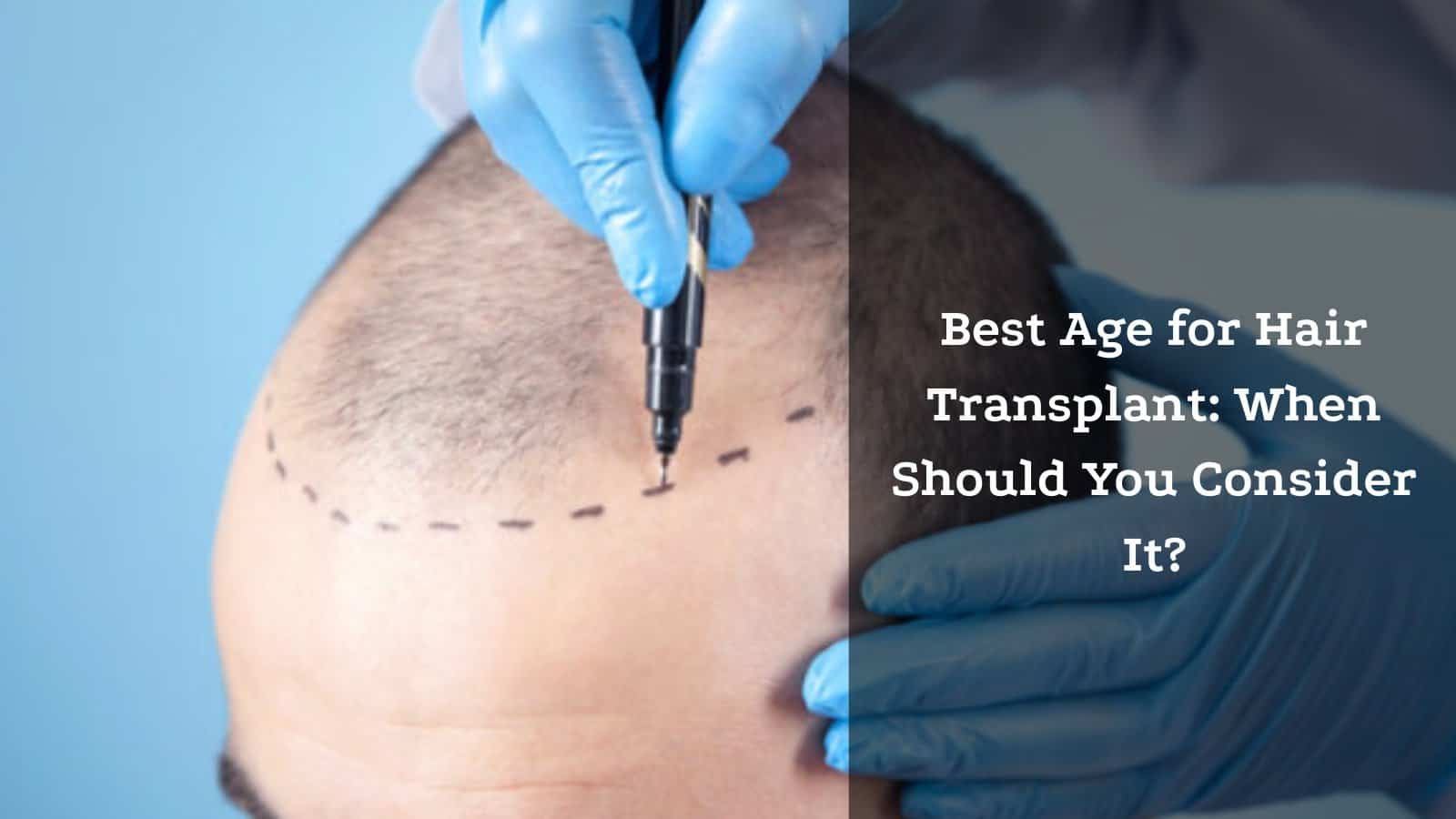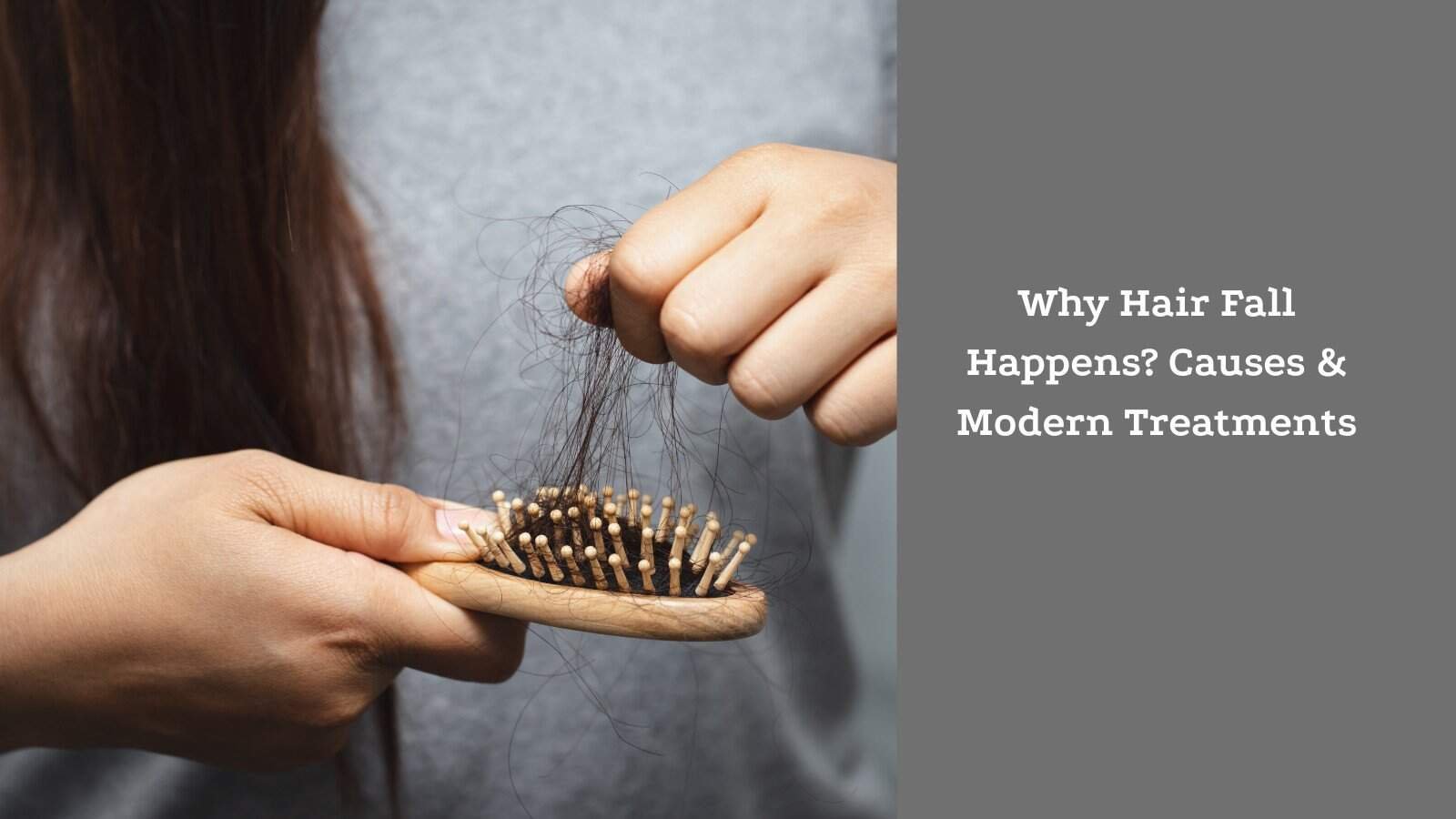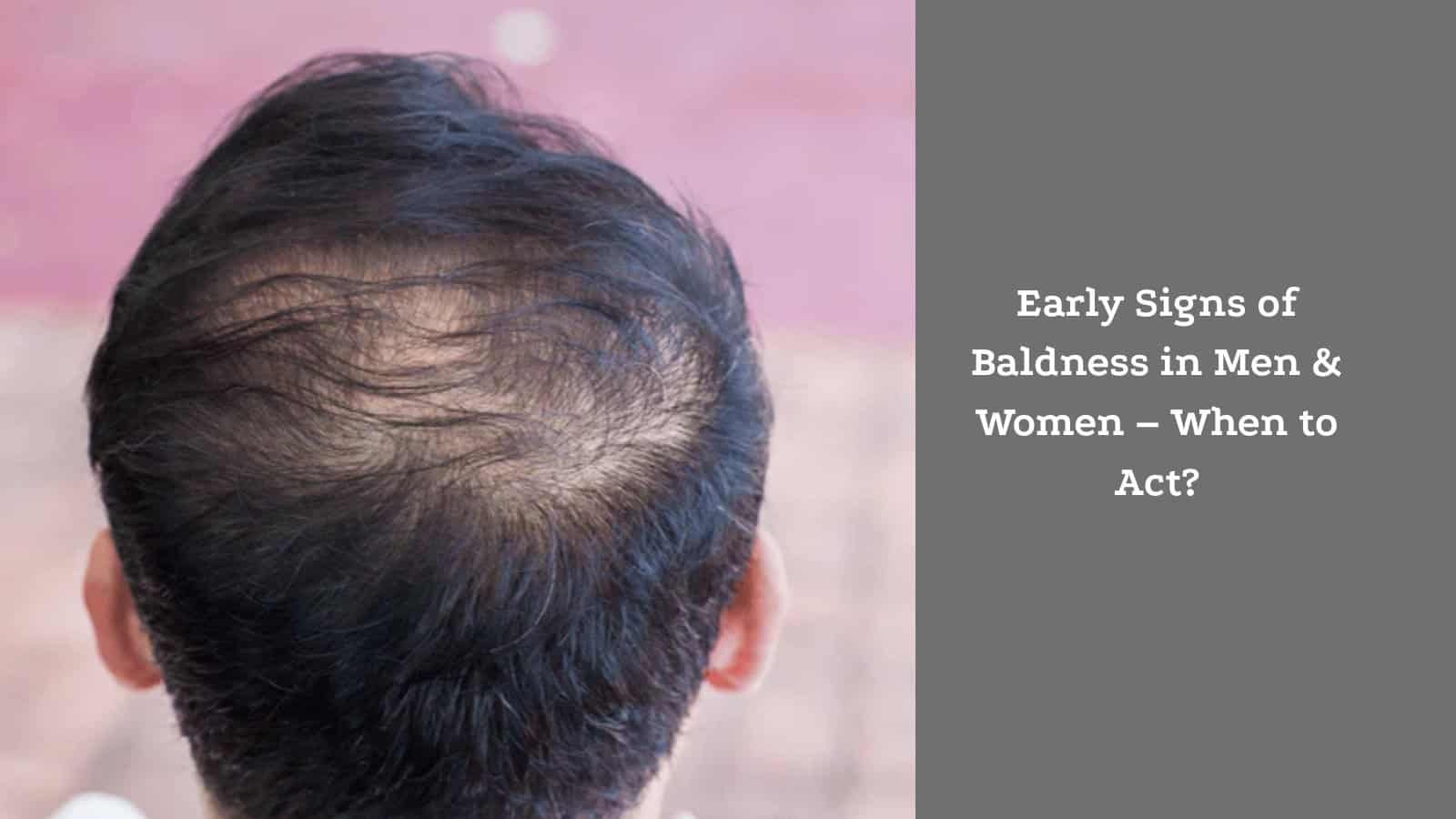When it comes to restoring hair through surgery, age plays a critical role in the long-term success of a hair transplant. Many people start noticing a receding hairline as early as 18 or in their early 20s, which often raises the question: “What age should you get a hair transplant?” While the desire to act quickly is understandable, not everyone is the right candidate at such a young stage. Doctors often emphasize that identifying the best age for a hair transplant is just as important as choosing the right technique or clinic. Starting too early can lead to unpredictable results, whereas waiting until the right time ensures a natural, long-lasting outcome.
Why Age Matters in Hair Transplant Surgery
When planning a hair restoration procedure, surgeons always consider a patient’s age before recommending surgery. This is because hair loss patterns are progressive and can change drastically over time. Someone experiencing hair thinning at 18 may continue losing hair rapidly through their 20s, making early surgery less predictable. Understanding the hair transplant best age helps ensure results that remain natural and sustainable for years to come.
Another key factor is donor hair availability. Hair taken from the back or sides of the scalp is limited, so surgeons must plan carefully to avoid exhausting this resource too early. If surgery is done before the pattern of baldness is clear, there may not be enough donor hair left for future procedures.
Finally, the goal of a transplant is not just immediate coverage but long-term results. By choosing the right time and knowing what age to get a hair transplant, patients can achieve a fuller, natural look that lasts well into the future without the need for frequent corrections.
Hair Receding at 18 – Is It Too Early for a Hair Transplant?
Noticing hair receding at 18 can feel alarming, especially when confidence and self-image are tied closely to appearance at such a young age. However, most surgeons agree that 18 is too early for a hair transplant. The reason is simple: hair loss at this stage is usually unstable and unpredictable. If surgery is performed before the balding pattern becomes clear, the transplanted hair may look unnatural as surrounding native hair continues to thin.
Instead of surgery, doctors typically recommend FDA-approved treatments like Minoxidil and Finasteride to slow down or stabilize hair loss. These medications can help maintain existing hair and delay the need for surgical intervention. Lifestyle adjustments and proper scalp care may also play a supportive role in managing early thinning.
When considering the best age for a hair transplant, specialists emphasize patience. Most suitable candidates are in their mid-20s or later, when hair loss has stabilized and donor hair planning can be more strategic. For teenagers facing receding hairlines, starting with non-surgical options first ensures better long-term outcomes and preserves the possibility of a natural-looking transplant in the future.
The Ideal Age Range for Hair Transplant
Most experts agree that the best age for hair transplant is typically between the mid-20s and early 40s. By this stage, hair loss patterns are more stable and predictable, allowing surgeons to design a treatment plan that looks natural and lasts for the long term.
Patients in their late teens or very early 20s may still experience rapid, unpredictable thinning. If surgery is done too early, the transplanted area may remain full while surrounding hair continues to recede, creating an unnatural look. This is why doctors prefer waiting until baldness patterns are clearer before proceeding.
For many people, the hair transplant best age is when hair loss has slowed, donor hair is plentiful, and expectations are realistic. At this point, surgeons can strategically place grafts to achieve results that remain consistent over decades, reducing the need for frequent corrective procedures.
Factors That Decide the Right Age
While age is an important guideline, the right time for a hair transplant is not the same for everyone. Dermatologists and implant surgeons carefully evaluate several factors before recommending surgery, including:
- Genetics – Family history of baldness often determines how quickly and extensively hair loss will progress. If your father or grandfather experienced advanced baldness, doctors may advise waiting until your pattern becomes more predictable.
- Lifestyle – Stress levels, diet, and overall health can accelerate or slow hair loss. Surgeons consider whether lifestyle adjustments and non-surgical treatments might help before suggesting surgery.
- Extent of Hair Loss – Someone with minimal thinning may be better suited to medications like Minoxidil or Finasteride, while individuals with stable, advanced loss may qualify for a transplant sooner.
- Medical History – Conditions such as hormonal imbalances, scalp infections, or chronic illnesses can affect transplant success. Doctors may recommend addressing these first before moving forward.
Ultimately, specialists emphasize that deciding what age should you get a hair transplant depends on more than just the number of years. The decision requires a thorough consultation with a dermatologist or hair restoration surgeon, who can assess your unique case and recommend the most effective, long-term solution.
Alternative Options for Younger Patients
For individuals under 25 who notice early thinning or hair receding at 18, surgery is rarely recommended. Fortunately, there are several FDA-approved non-surgical options that can help manage hair loss and maintain a fuller look until they reach the best age for a hair transplant.
- Minoxidil – A topical solution that stimulates hair follicles and slows down thinning. It is widely recommended by dermatologists for young adults experiencing early hair loss.
- Finasteride – An oral medication that helps reduce the hormone responsible for male pattern baldness. It is particularly effective in stabilizing hair loss and preserving existing hair.
- PRP (Platelet-Rich Plasma) Therapy – A treatment in which a patient’s own blood plasma is injected into the scalp to encourage hair growth and strengthen existing follicles.
- Lifestyle Adjustments – Maintaining a balanced diet, reducing stress, and avoiding harsh hair treatments can support overall hair health and prevent premature thinning.
By combining these approaches, younger patients can slow down hair loss and protect their donor hair, ensuring that when they do reach the ideal age for a hair transplant, the results are more natural, predictable, and long-lasting.
Risks of Getting a Hair Transplant Too Early
Undergoing a hair transplant before reaching the hair transplant best age can lead to several complications that may affect both appearance and long-term results. Some of the key risks include:
- Rapid Surrounding Hair Loss – If native hair continues to thin after an early transplant, the contrast between transplanted and natural hair can create an unnatural look.
- Patchy or Uneven Results – Early surgery may not account for future hair loss patterns, leading to areas that appear sparse or uneven as surrounding hair continues to recede.
- Need for Multiple Surgeries – Because hair loss is still progressing in younger patients, they often require additional procedures to maintain a natural look, increasing cost, recovery time, and the risk of scarring.
Dermatologists and hair restoration surgeons consistently emphasize patience. Waiting until hair loss has stabilized ensures that the transplant looks natural, uses donor hair efficiently, and minimizes the need for corrective surgeries. Choosing the best age for a hair transplant is crucial for achieving long-lasting, aesthetically pleasing results.
Risks of Getting a Hair Transplant Too Early
Undergoing a hair transplant before reaching the hair transplant best age can lead to several complications:
- Rapid Surrounding Hair Loss – Transplanted hair may remain healthy, but the surrounding natural hair can continue thinning, creating an unnatural contrast.
- Patchy or Uneven Results – Early surgery may not account for future hair loss patterns, resulting in uneven coverage and an unnatural appearance over time.
- Need for Multiple Surgeries – Younger patients often require additional procedures as hair loss progresses, increasing costs, recovery time, and the risk of scarring.
Hair restoration specialists stress that waiting until hair loss stabilizes is essential for achieving natural, long-lasting results. Choosing the best age for a hair transplant ensures efficient use of donor hair and reduces the likelihood of corrective surgeries.
Expert Recommendations (Dermatologist’s View)
Experienced hair transplant surgeons and dermatologists consistently emphasize that timing is critical for successful hair restoration. According to specialists, the best age for a hair transplant is typically when hair loss has stabilized—usually in the mid-20s to early 40s—so that the results are natural and long-lasting.
Medical experts stress the importance of a thorough consultation before undergoing any procedure. During this evaluation, surgeons assess hair loss patterns, donor hair availability, family history, and overall health to determine the optimal timing for surgery. Early intervention with FDA-approved treatments like Minoxidil or Finasteride is often recommended for younger patients to slow hair loss and preserve donor hair until the right age for surgery.
By following professional guidance, patients can achieve predictable, aesthetically pleasing outcomes while minimizing the risks of patchy results, rapid surrounding hair loss, or the need for multiple corrective surgeries. Consulting a qualified dermatologist or hair transplant surgeon ensures that decisions are evidence-based and tailored to the individual’s unique hair loss profile.
Restore Your Hair Confidence with Majestic Derma, Delhi
Are you struggling with hair thinning, bald patches, or excessive hair fall? At Majestic Derma, Delhi, we offer advanced and personalized hair restoration treatments designed to bring back your natural hair density and confidence.
Our Specialized Hair Treatments Include:
- Hair Transplant (FUE & FUT) – Get permanent and natural-looking results with advanced follicular techniques performed by expert trichologists.
- Hair Patch / Non-Surgical Hair Replacement – Instant volume and coverage for bald areas without surgery, pain, or downtime.
- PRP Hair Treatment – A safe, natural, and effective therapy that uses your own platelets to stimulate hair regrowth.
- GFC Hair Treatment – The latest regenerative therapy using Growth Factor Concentrate (GFC) to strengthen hair roots and promote new growth.
Whether your concern is genetic hair loss, post-pregnancy hair fall, or stress-related thinning, our dermatology experts design a treatment plan that delivers visible, lasting results.
📍 Location: Majestic Derma Clinic, Delhi NCR
📞 Book a Consultation: https://majesticderma.com/
Final Thoughts
Noticing hair receding at 18 can be stressful, but it’s important to remember that early thinning doesn’t always mean immediate surgery is the best solution. The best age for a hair transplant depends on when hair loss stabilizes, donor hair is sufficient, and results can be long-lasting and natural.
Young patients are encouraged to explore FDA-approved non-surgical treatments like Minoxidil or Finasteride to slow hair loss until they reach the ideal age. Most importantly, always consult a board-certified dermatologist or hair transplant surgeon before deciding what age to get a hair transplant. Professional guidance ensures a safe, effective, and personalized approach, giving you the best chance for lasting, natural results.






